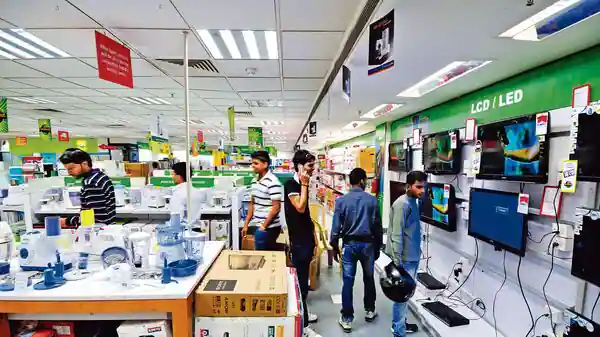Omicron interferes with sales for offline electronic devices merchants by up to 70%.

New Delhi : The sharp rise in covid-19 situations given that the start of the year has begun to influence the sales of offline retail electronics stores that had started to see some recuperation on the back of cheery period sales, according to market experts.
” Offline retail has gotten on the back foot because the pandemic. Just when they had begun to recuperate, the concern of an additional covid wave has disrupted sales. After Omicron, consumers are not concerning markets. Sales have come by as much as 70% for some shops,” stated Arvinder Khurana, nationwide head of state, All India Mobile Retailers Association (AIMRA).
Sales have actually visited 30-35% in big format retailers, which have thousands of items, Khurana pointed out. In store, sales have visited 50%. In locations where the government has begun enforcing time limit and where situations have boosted, sales have stopped by as much as 70%. Also Read – Omicron: 10 medical gadgets to keep at home
” January used to be a lean month. Sales have been more impacted as a result of Omicron. Walk-ins have come by virtually 50%,” claimed Manish Khatri, companion, Mahesh Telecom.
Sales of some items have actually decreased, however some stores have actually seen a boost in demand for laptops. At Vijay Sales, “laptop sales increased once more. Overall sales have actually decreased by 10% contrasted to last month,” stated Nilesh Gupta, supervisor of the firm. Mint had actually previously reported that notebook demand in 2022 will be driven by industrial as well as federal government orders to support the return to work.
There has been a lack of a number of essential items over the last two to three months, consisting of apples iphone, which are only being provided to huge sellers, according to Khurana. For brand names such as Mi, items are readily available just for a week. Stocks have actually additionally been hit by a chip scarcity. Below 15K mobile phones are in short supply as well as 80% of them are now being supplied to on-line shops. Brands are likewise prioritizing premium smart devices owing to a chip lack.
” Online vendors have actually additionally progressed sales. Several of the sales that were expected to begin on 26 January are happening 10 days earlier,” he claimed. The gap between offline and also on-line retail sales has actually expanded after the pandemic.
Offline networks signed up an 18% year-on-year (y-o-y) decline in smart device delivery in Q3 (July-September) 2021 compared to a 5% y-o-y decrease in online deliveries, according to International Data Corporation (IDC). The offline market has actually diminished under 50% for the first time in decades, Khurana stated. Online networks made up a record high 52% share of smartphone deliveries in Q32021.
” Very early reports show stress in offline channels. Uncertainty around restrictions and also weekend break lockdowns do not aid. Offline has actually been seriously challenged considering that March 2020,” stated Navkendar Singh, research supervisor, IDC India.
Hefty advertising and also sales events led treatments by on the internet platforms can not be matched by offline, Singh kept in mind. Brands try to assist but the cost of procedures offline is expensive to broadbase it completely.” There were some indicators of recovery in October-November, which assisted considering that it is a hefty sales period,” Singh claimed.
The mobile retailers’ organization has been asking the government for relief actions. In 2021, AIMRA had urged the federal government to extend the interest-free moratorium for 6 months and also enable collateral-free loans in between 25 lakh as well as 1 crore with minimal rate of interest for merchants.
There has been no support from the government for offline merchants, Khurana lamented. Merchants are operating at a loss, especially as concerning 85% of their expenditures is the set expense of offline retail, that includes salaries and also rent.
